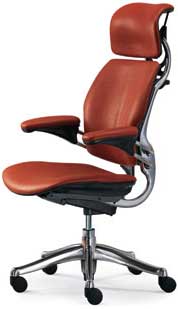We don’t have any problems. We have the solution. What does that mean to you? At Innate Chiropractic Center in Lansing Michigan, Dr. Dennis Weinstein and his staff will help you come up with a strategy to handle life’s stessors. Subluxation, or nerve interference can be best described like having static on your cell phone, the signal can’t get through. Nerve flow can’t get through. But, what causes subluxation? Good Question. Stress from life. It can be physical stress from your posture, accidents, injuries, trauma, etc. From Biochemical stress from the foods you eat or the chemicals in the air. Mental or emotional stress from work, home, family, bills, mortgage payment, school, kids. So, it would only make sense, if we were to try and handle the stress from life or minimize it the best we can, your body would be able to function better and perform properly.
Practice Perfect Posture
Your excellent posture gives you energy and stamina for improving the quality of your life. Yoga teachers emphasize that it is impossible to make a healthful impression without perfect posture. Posture expresses to others “who you are” and shapes the function and structure of the nerve energy lifeline that is your spine. Research has shown posture to significantly affect the mental, structural, and chemical balance of the body and its organs. Posturally speaking standing is fundamental. It is the training and proving ground for a strong, healthy life from a well-balanced stress-free spine.
Top 4 Core-Building Exercises
 The human body has 29 core muscles located in the back, abdomen and pelvis regions. They help to give a person a stable center of gravity, while helping in controlling movements, supporting whole of the back and giving out a semblance of stability.
The human body has 29 core muscles located in the back, abdomen and pelvis regions. They help to give a person a stable center of gravity, while helping in controlling movements, supporting whole of the back and giving out a semblance of stability.
These core muscles form the foundation on which the movement of the body is based. Strong core muscles tend to resist injury and form a protective cushion for the whole spinal column.
However, weak core muscles can cause a person to develop a poor posture, pain all over the body, and make the individual more prone to injuries from everyday activities.
Exercise on a regular basis can make these muscles stronger, but it is necessary to get the posture right before getting on with the exercises.
Good Posture
Good posture not only makes a person look attractive, but it does wonders for the overall skeletal structure. Chiropractic practice pays a lot of attention to proper posture. Correct posture will ensure that a person’s muscles, organs along with joints and bones are in their correct, natural positions.
A bad posture can result in a lot of problems for the body, following are examples of a poor posture:
- Drooping shoulders
- Head or neck held forward
- Lower back arching too much
- Sitting with a wallet in the back pocket
- Phone receiver being held between neck and shoulder
- Drooping forward while sitting
These postures must always be avoided.
Bridge
The person should lie on the back with knees bent. Then the abdominal muscles should be contracted while the person slowly raises the hips off the floor then holding the position for around 10 seconds.
The hips should then be lowered to the floor and the same method repeated again.
Bird Dog
The person should get down on their hands and knees while keeping the head and neck aligned with their back. The core muscles are then contracted; one arm raised meanwhile raising the opposite leg.
Plank
The person should lie on their stomach with the palms facing down. They should then slowly start to rise off the floor while resting on toes and elbows. The back should be kept as flat as possible, core muscles in a contracted position and held for at least 12 seconds before lowering themselves to the floor.
Segmental Rotation
In this exercise, the individual is to lie on the back with their knees bent and the feet should be flat on the floor. While keeping the shoulders flat on the floor, they should let their knees fall slowly towards the left. After returning the legs back to the original starting point, the same action should be repeated.
Image Used under Creative Commons license. Photo Credit: Plank.jpg
Understanding Ergonomics – How Seat Design Plays a Vital Role
 It is estimated that at least 50% individuals in the industrialized world suffer from some kind of back problem, most notably due to a poor or inadequate seat design. How we sit all day in front of our workstations has a marked impact on the overall health of our spine. As a result of bad posture, the lumbar region in the back bone is what takes the most pounding. Here’s what you need to know, and many chiropractors will stand by it.
It is estimated that at least 50% individuals in the industrialized world suffer from some kind of back problem, most notably due to a poor or inadequate seat design. How we sit all day in front of our workstations has a marked impact on the overall health of our spine. As a result of bad posture, the lumbar region in the back bone is what takes the most pounding. Here’s what you need to know, and many chiropractors will stand by it.
There is no universal seat that’s designed to accommodate every single person. But there are a number or ergonomic factors that come into play when we’re talking seat design. These generally work well for the average person.
Seat height should be set in a way so as to support a knee angle of 90 degrees. This takes undue stress off the thighs and buttocks. A chair that’s too high will increase the pressure at the underside of the knees, reducing blood flow and increasing unnecessary pressure on the nerve.
A chair that’s too low places pressure on the ischial tuberosities – this is where the upper thigh originates in the gluteus maximus region. Normally, the glutes cover them in the upright position, but they are exposed and at an ergonomic disadvantage when we’re sitting.
Optimal seat depth is recommended at 16.5”; between 14” and 18.5” for adjustable seats.
You should avoid hard seats. Seat pan contouring and cushioning should be designed in a way so that pressure is distributed over a larger area and the pelvis rotates forward – this encourages better posture.
Ideal seat cushioning is about 2” thick. The cushioning needs to be firmer and thicker in the back, while being less firm and thinner at the front. Too much cushioning and your body is going to sink into the chair, restricting movement. A soft chair may be very welcoming and comfortable at first, but it goes against basic ergonomic sense; as the body sinks, blood flow is reduced and skin temperature rises as you experience more compression under the thighs. At the end of the day – more discomfort.
A seat width that’s between 20” and 23” generally works well.
An ideal seat angle helps you maintain good contact with the backrest; a 5 to 10 degree angle is good.
There many more ergonomic factors related to optimal seating, and these are just some of them at a glance. A good chiropractor can help you determine exactly what type of chair best suits your body type.
Image used under Creative Commons Licensing: FreedomChair.jpg
